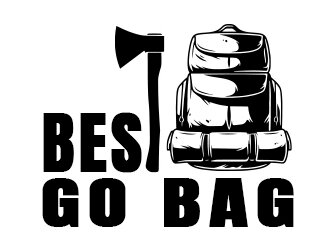Camping and fire go together like a hand in a glove. Or as Forrest Gump would say, like peas and carrots.
It’s difficult to imagine a camping experience without cooking your food over a fire during the day. And then sitting around a fire at night after a long day of hiking, enjoying s’mores, beverages, and each other’s company.
But we’ve all heard the horror stories resulting from a fire getting out of control. Millions of acres of beautiful forest have been destroyed – not to mention lives and homes – by wildfires.
And many of those fires resulted from the carelessness of people who built those fires. This is a tragedy that is easily averted. But it takes all of us doing our part.
The 25-foot rule
Today I want to discuss ways to keep your campfire from destroying forestland, homes, and maybe even lives.
Let’s start with where you build a fire. It needs to be at least 25 feet away from trees, shrubs, tents, buildings, and other structures.
But don’t just look in front, behind, and around you. Look up as well. There should be at least 20 feet clearance between your fire and tree branches above you.
Keep your fire area small, especially if it’s a breezy day. You can always expand it if you feel it’s safe to do so. Make sure to carefully watch any children or pets with you so they don’t come too close to the fire. Keep fire-starters out of kids’ reach.
Drown, stir, repeat
Next, make sure you have the proper tools to handle a fire. A bucket of sand will come in handy if you need to quickly smother a fire.
You should also have a bucket of water to submerge a burned log and douse a fire when you’re finished with it. Drown the fire with water, mix the ashes with a shovel, and drown it again.
Fire Pit tools include a poker to move logs and whatever kindling you might be using. Prongs will allow you to pick up and move or discard a burned log. A shovel can aid in extinguishing a fire.
Needless to say, never leave a fire unattended. Even for a few minutes. And when you are finished with it, be absolutely certain it is completely out. Forest fires have started when campers incorrectly thought they’d fully extinguished their fire.
11 more tips
Here are a few more outdoor fire safety tips to follow:
- Acquire the proper permit to build a campfire and learn the fire regulations that are in place.
- Clear grass, needles, dry leaves, and sticks at least 10 feet away from where you will build your fire.
- If available, use a designated firepit. Or dig one a foot deep and surround it with a ring of stones.
- Use local firewood. Bringing firewood from your home area could introduce tree-killing insects and diseases that weren’t already there.
- Build your fire downwind from your tent.
- Never use a flammable liquid such as gas to start a fire.
- Don’t wear loose-fitting clothing while using a campfire.
- Remember to stop, drop, and roll if your clothing does catch on fire.
- Treat a burn immediately. Use cold water on it for several minutes and cover it with a clean, dry cloth. Get medical attention as soon as you can.
- Don’t build a fire if it is an exceptionally windy day.
- You don’t need a roaring fire. A small fire surrounded by rocks will produce plenty of heart for cooking and warmth.
Handling outdoor fire responsibly can make camping one of life’s most enjoyable experiences. Handling it irresponsibly can result in tragedy. The choice is clear.

